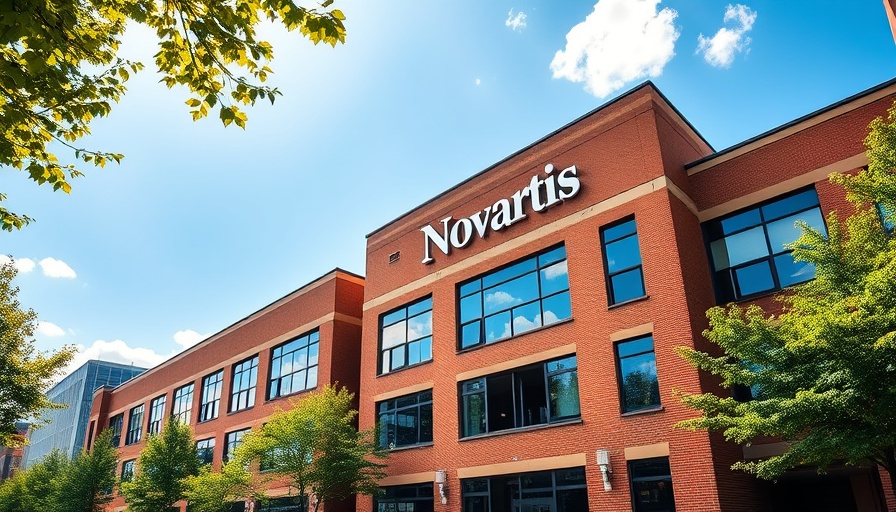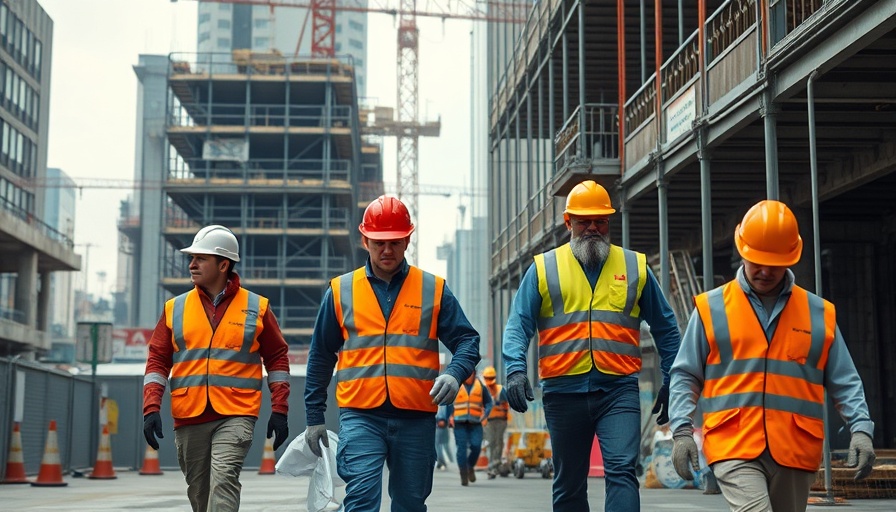
Novartis’ Ambitious Plan: A $23 Billion Commitment to U.S. Manufacturing
The recent announcement by Novartis to invest $23 billion over the next five years represents a significant shift in the pharmaceutical manufacturer's strategy, as it seeks to enhance its manufacturing capabilities within the United States. This ambitious plan includes the establishment of six new factories, the expansion of three existing sites, and the creation of a state-of-the-art research and development hub. This initiative comes at a time when global trade dynamics are shifting, largely influenced by the policies of recent U.S. administrations.
The Impact of Tariffs on Global Manufacturing
Tariff policies introduced by the Trump administration have significantly affected many multinational corporations, pressuring them to reconsider their global supply chains. Novartis' decision to bolster its U.S. manufacturing operations is indicative of a broader trend where companies are re-evaluating their manufacturing ecosystems to mitigate tariff-related risks. Other industry giants like Eli Lilly, Merck, and Johnson & Johnson are following suit with similar expansions, suggesting that this shift might be a response to both government pressure and changing market demands.
Local Economic Boost: Job Creation and Infrastructure Development
With Novartis's expansion, local economies where new factories and facilities will be constructed stand to benefit greatly. This investment is expected to generate thousands of jobs and stimulate surrounding businesses through increased demand for services and materials. For construction companies and property developers, partnership opportunities abound, making this a pivotal moment in the commercial real estate sector.
Strategic Innovation in Pharmaceutical Production
The new facilities will focus on advanced manufacturing techniques, including the production of complex medications such as radiopharmaceuticals and gene therapies. Two planned plants in Florida and Texas will specialize in cancer treatment drugs like Pluvicto and Lutathera, showcasing Novartis’ commitment to bringing cutting-edge technology to the U.S. market. As the demand for personalized medicine grows, such investments ensure that companies can respond quickly to evolving healthcare needs.
A Long-Term Growth Strategy
This bold strategy isn't merely about responding to immediate challenges; it also aligns with Novartis’ long-term growth outlook. According to CEO Vas Narasimhan, these investments will not only strengthen the supply chain but also enhance their technological capabilities within the U.S. The establishment of a $1.1 billion biomedical research hub in San Diego, set to open in 2028-2029, reflects their commitment to fostering innovation in healthcare.
Conclusion: A Call to Action for the Business Community
For business owners and C-suite executives in the manufacturing and construction sectors, now is the time to assess how these upcoming changes can create potential opportunities for partnerships and investments. Novartis’ $23 billion commitment marks a pivotal shift in the pharmaceutical industry’s landscape and emphasizes the value of adaptive strategies in navigating global challenges. Engage with your local economic development offices and consider how your organization can align its strategies with these emerging trends to capitalize on opportunities that will arise in the coming years.
 Add Row
Add Row  Add
Add 




Write A Comment